
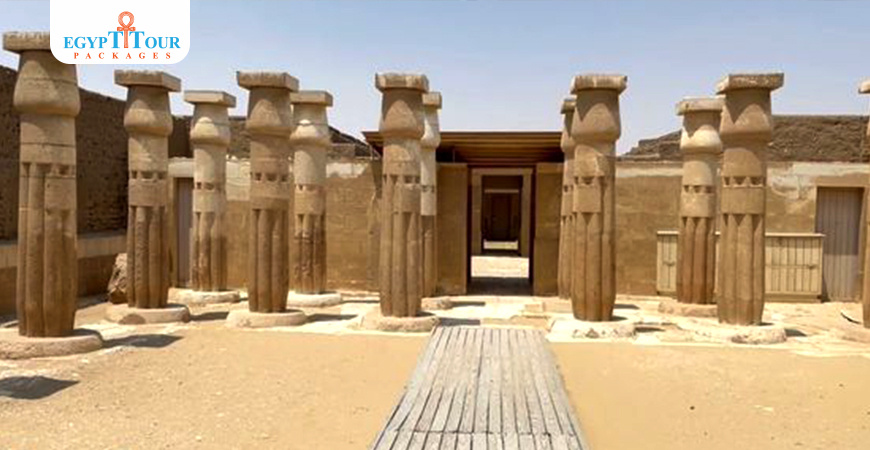
Tomb of Horemheb in Saqqara
This tomb is the largest in the New Kingdom cemetery south of the causeway of the Fifth Dynasty King Unas.
Biography of Horemheb
Horemheb was the last pharaoh of the 18th Dynasty of Egypt, reigning from 1319 to 1292 BC. He was a commoner by birth, but rose through the ranks of the military to become commander-in-chief under Tutankhamun, ruled as a boy only for a short time. He is most famous because his tomb was discovered almost intact and full of treasures in 1922 Tutankhamun and Ay. He was a skilled military leader and played a key role in restoring Egypt's power and prestige, which had declined during the reign of Akhenaten. It is likely that Horemheb built this tomb in Saqqara when he was an army commander and lived in Memphis was one of the oldest and most important cities in ancient Egypt, located at the entrance to the Nile River Valley near the Giza plateau. Memphis . He abandoned it when he built a tomb in the Used as a burial chamber for nearly 500 years, the Valley of the Kings was used for royal burials for the Kings,their families, and their possessions. Valley of the Kings .
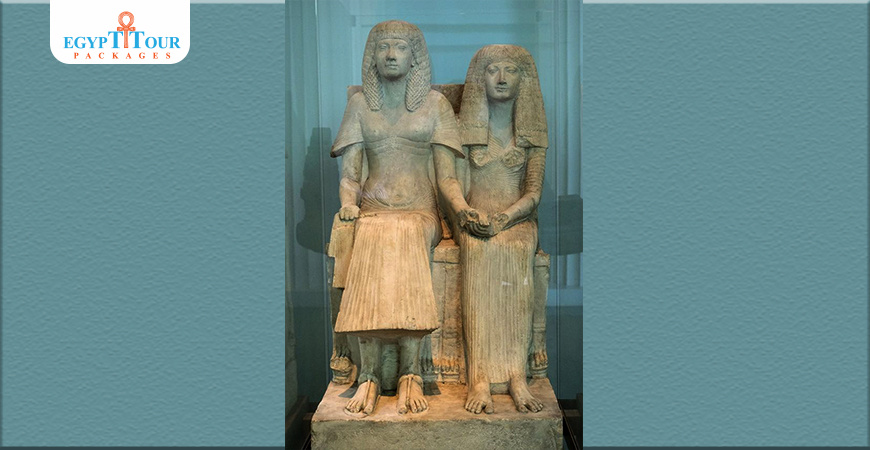
Architectural layout
This cemetery dates back to the Eighteenth Dynasty, the era of King Tutankhamun, ruled as a boy only for a short time. He is most famous because his tomb was discovered almost intact and full of treasures in 1922 Tutankhamun . The cemetery is located southeast of the Pyramid of Unas , where the most famous cemetery in Saqqara from the New Kingdom is located. The tomb consists of an upper part consisting of three edifices, three courtyards, a statue hall, and three shrines. The central chamber was surmounted by a pyramid. There is a well 28 meters deep in the last courtyard that reaches the lower part of the cemetery. The lower part consists of a well that connects to a group of corridors and rooms at different levels, then the burial chamber. The lower part was designated for the burial of (Mut-Negmet), Horemheb's wife and a secondary wife. Horemheb left this tomb and was buried in the Used as a burial chamber for nearly 500 years, the Valley of the Kings was used for royal burials for the Kings,their families, and their possessions. Valley of the Kings .
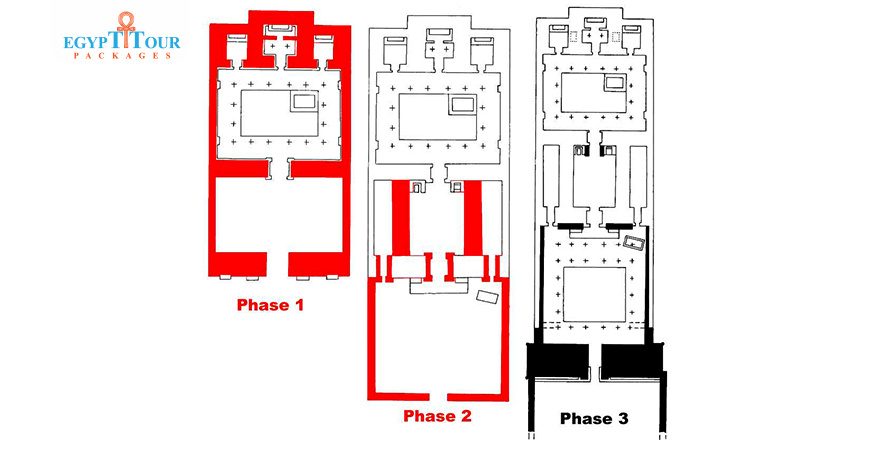
The Forecourt and Pylon
The forecourt of the tomb was paved. It has not been well restored. It leads to a great pylon of mud bricks, undecorated,divided in two parts as is usual in a temple.The part turned toward the outside was dressed with a facing of limestone of which some of the blocks have been put back in place are a reminder of its existence. This pylon was not decorated.
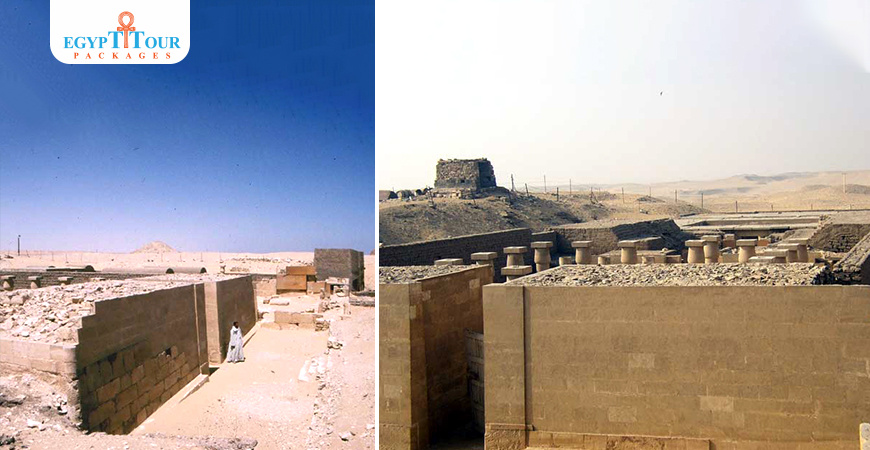
The First Courtyard
The entry gives way to the first great courtyard largely to open sky. engraved colonnade of about 3 meters high supported a peripheral roof intended to protect the reliefs from the elements and to provide shade for the visitors. The pavement under the colonnade is raised slightly in relation to the central portion of the courtyard, with a system for the drainage of water. None of the columns have been recovered intact, they have been restored according to the one recovered in the second courtyard. These columns each include a scene engraved in an oblong setting and turned toward the center of the court, showing Horemheb in perpetual worship before the sun. The decor has nevertheless largely disappeared. Some among the blocks are in European museums, notably in (Leiden). The rest of the scenes include aspects of the career of Horemheb, as well as of the scenes of contribution of the necessary offerings to the funerary cult.
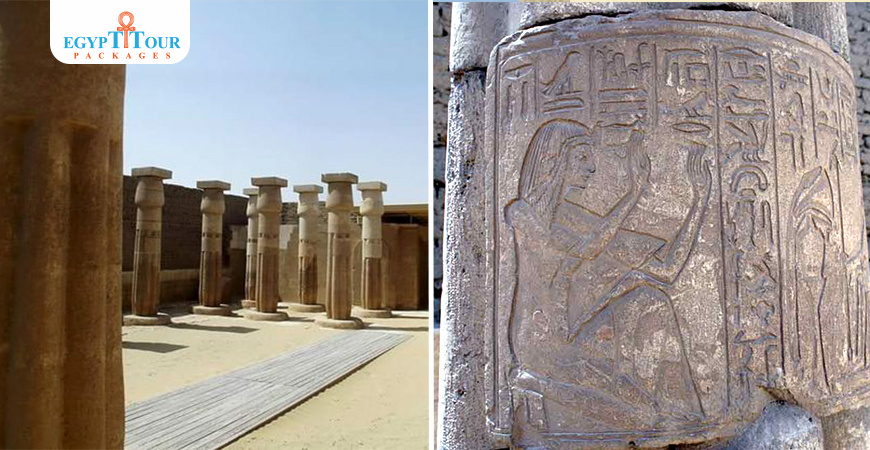
Tomb of Horemheb in Saqqara
- The First Courtyard (South Wall)
This was the last erected before the accession of Horemheb to the throne. some foreigners there which could be a delegation, containing Libyans, Asians, Nubians (which one will find elsewhere in the monument) but also a man from the islands of the Aegean sea (or could be a Greek). The accompanying text has disappeared.

Stela Of Horemheb
- The First Courtyard (West Wall)
next to the door leading to the statue room, a stela. The one which one sees nowadays is a replica, the original being in the British Museum. It carries the longest preserved text of the tomb (25 lines). at the top, Horemheb is worshipping three deities: Ra-Horakhty, Thoth and Ma'at.
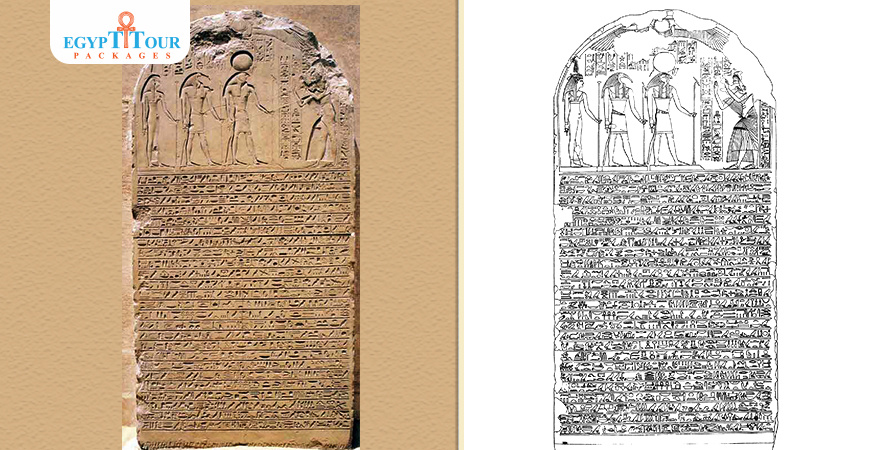
Memphite Tomb of Horemheb in Saqqara
-
THE STATUE ROOM
On the south wall of a small vestibule, to the east of the statue room, one finds a fine well preserved and nearly complete relief showing an anonymous priest making the ritual of 'Opening of the Mouth' on a seated statue of Horemheb. A small character represented behind Horemheb named (Sementaui) seems to have been a particular favorite scribe of Horemheb for a long time. After the death of Sementaui he was here replaced by another, (Ramose), whose name has been engraved over that of his predecessor. The actual statue room is a large oblong, once covered by an arched roof whose ancient collapse has caused the disappearance of the ancient paintings which had been made directly on the plaster. Inscriptions written on the jambs of the entry give interesting information. On those of the east, one finds Horemheb represented before a table of offerings. Only on one of the two representations does he wear an uraeus on the forehead, added after his accession to the throne.

Inscriptions from the tomb of Horemheb in Saqqara
- THE SECOND COURTYARD (East Wall)
This is similar but a smaller version of the first courtyard. The pillars of the colonnade are just over 2 meters in height, and the reliefs are here better preserved. One of the columns was recovered intact and acted as model for the restoration of the others. considers the scenes, which have survived, as historically among the most important of all Egyptian history, notably showing the military policy in the days of Tutankhamun, ruled as a boy only for a short time. He is most famous because his tomb was discovered almost intact and full of treasures in 1922 Tutankhamun and his advisors through the intermediary of the numerous representations of the military functions. The reliefs are marvellous, with concern shown in the depiction of the particularly visible detail in the representations of the foreigners. On the right-hand side, Horemheb standing. Before him, an officer forces a Nubian chieftain to "smell the ground" as a sign of submissiveness. Behind, six splendidly represented officers observe the scene. Behind them again, long files of prisoners escorted by Egyptian soldiers, curiously represented on a smaller scale, who could be young recruits, of which one knows that Horemheb was the supreme person in charge. The military scribes, magnificently represented, scrupulously record all the details. Some Nubian prisoners are seated on the ground while an Egyptian brings another captive, while hitting him on the chin.

Elements of Horemheb's tomb in Saqqara
- THE SECOND COURTYARD (South Wall)
Behind him are long rows of captives, solely of Asians (at least in the remaining reliefs). These frightened prisoners are this time manacled and attached by the neck to one another. The women and children taken along in captivity to Egypt are also represented. Their final fate remains unknown. The set of the military scenes is interrupted by a representation of a seated Horemheb. He holds in his hand the sekhmet scepter and an uraeus has been added secondarily to his forehead. Attending behind him is the scribe Sementaui, of whom we have already spoken. It shows us on the other hand that we are not in the presence of a mythical scene but very real historic fact under the reign of Tutankhamun, ruled as a boy only for a short time. He is most famous because his tomb was discovered almost intact and full of treasures in 1922 Tutankhamun . Underneath one finds scenes of a butcher's shop and food store.
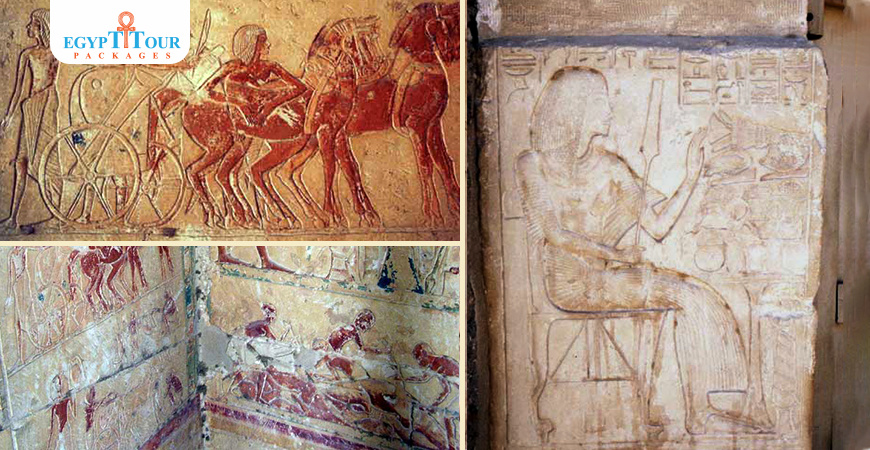
Horemheb Cemetery in Saqqara
- THE SECOND COURTYARD (West Wall)
Libyan, Nubians and Asiatic emissaries either knelt or lying on the ground come to implore king Tutankhamun, ruled as a boy only for a short time. He is most famous because his tomb was discovered almost intact and full of treasures in 1922 Tutankhamun , through the intermediary of his representative Horemheb, to grant them the "breath of life", and therefore his clemency. The rests of texts are difficult to understand but seem to make allusion to the devastation of their country after the passage of the Egyptian army.

The offering chamber in the tomb of Horemheb at Saqqara
This is the focal point of the monument, and the first part constructed. Its entry opens up to the west of the second courtyard. It adopts a square plan. It was probably covered by a roof in limestone surmounted of a pyramid of mud-bricks, even surmounted of a stone pyramidion. It is here that the funeral service with the offerings took place, since the deceased was buried in the well shaft, situated underneath, which is certainly the case for the two wives of Horemheb. The decoration has disappeared completely, except for two blocks probably coming from this place and which show Horemheb sowing and ploughing in the fields of Yaru. In the entry, portions of representations concern women, wives or mother of the deceased. The two small lateral chapels seem to have been uninscribed, or their paintings have disappeared completely.
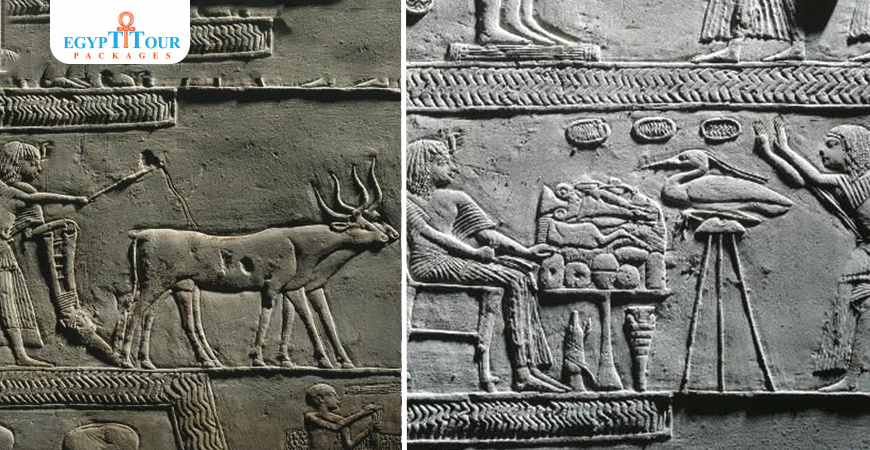
Horemheb receives the Gold
Young King Tutankhamun, ruled as a boy only for a short time. He is most famous because his tomb was discovered almost intact and full of treasures in 1922 Tutankhamun and his wife Ankhesenamun sitting under an umbrella. In the courtyard below, Horemheb was once again rewarded with gold, with heavy necklaces placed around his neck.
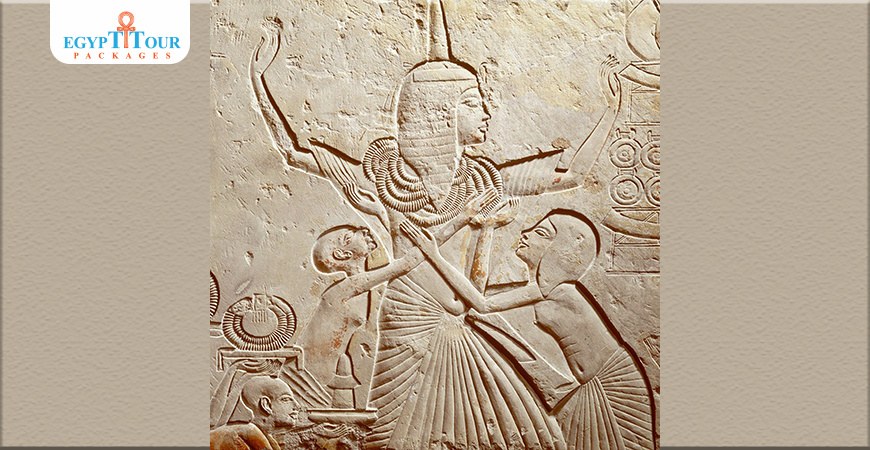
Post A Comment
Your Email Address Will Not Be Published.
Hot Categories
Topics of Saqara
Suggested Tours
Table of Contents
- Biography of Horemheb
- Architectural layout
- The Forecourt and Pylon
- The First Courtyard
- Tomb of Horemheb in Saqqara
- Stela Of Horemheb
- Memphite Tomb of Horemheb in Saqqara
- Inscriptions from the tomb of Horemheb in Saqqara
- Elements of Horemheb's tomb in Saqqara
- Horemheb Cemetery in Saqqara
- The offering chamber in the tomb of Horemheb at Saqqara
- Horemheb receives the Gold
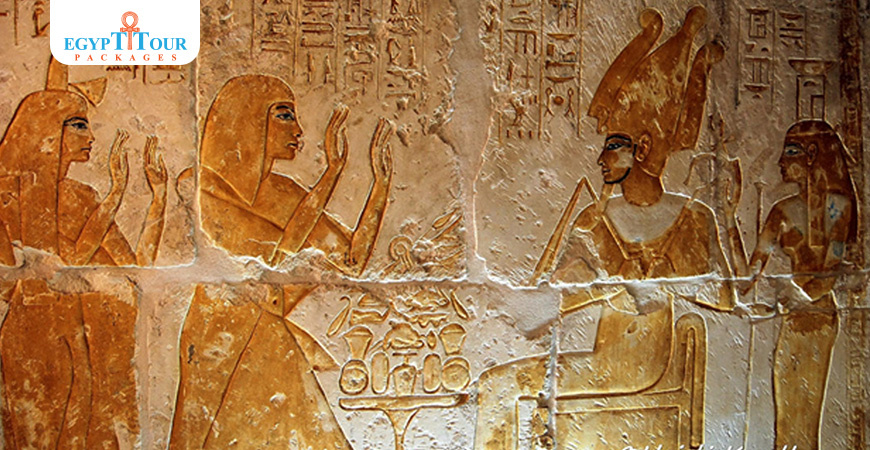


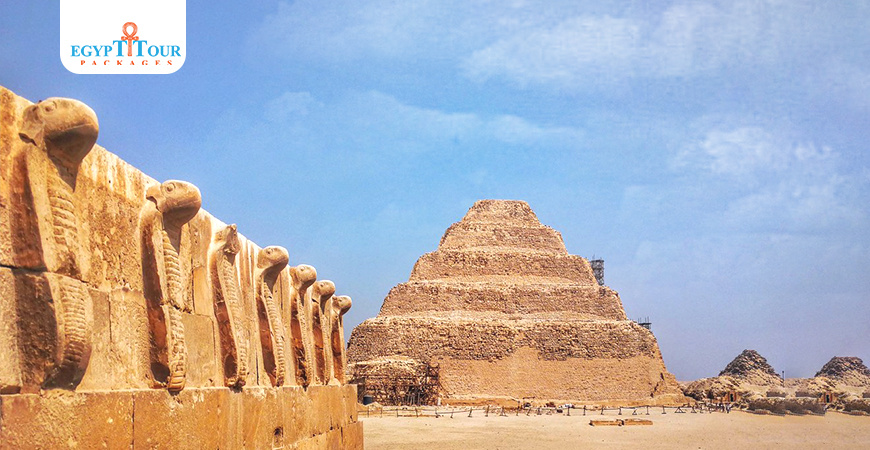







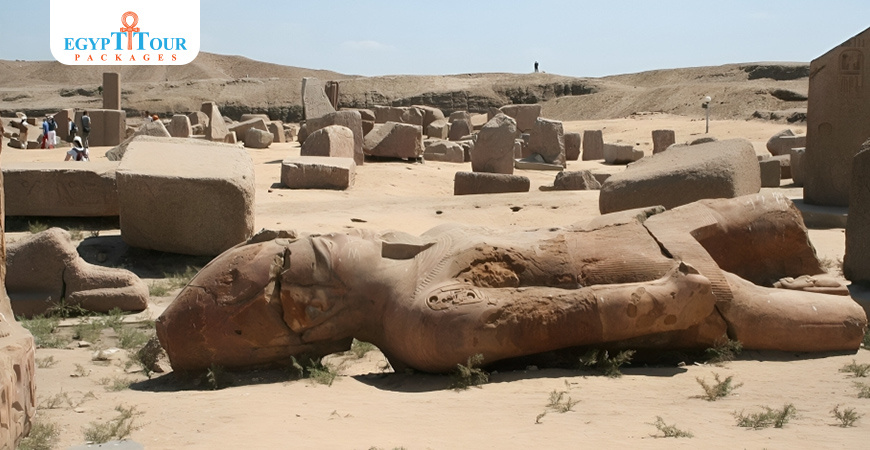


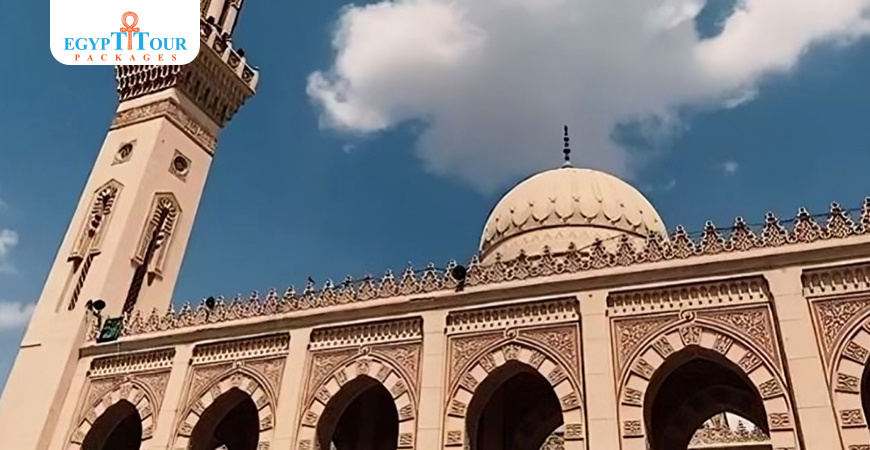


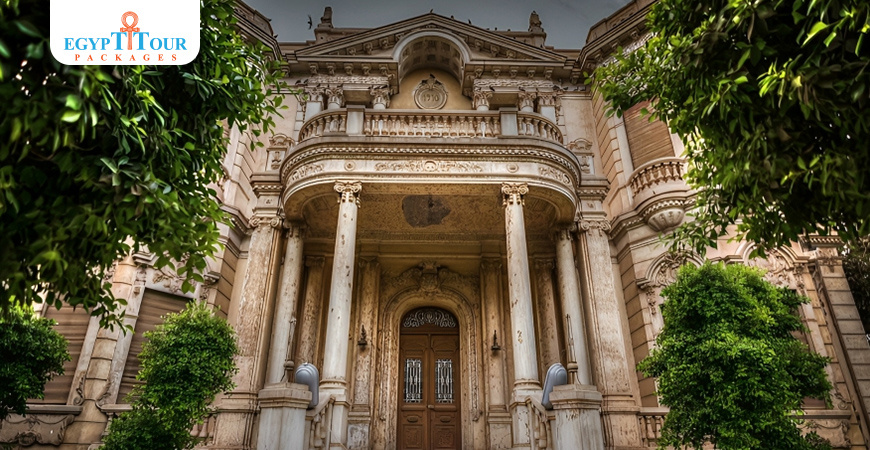
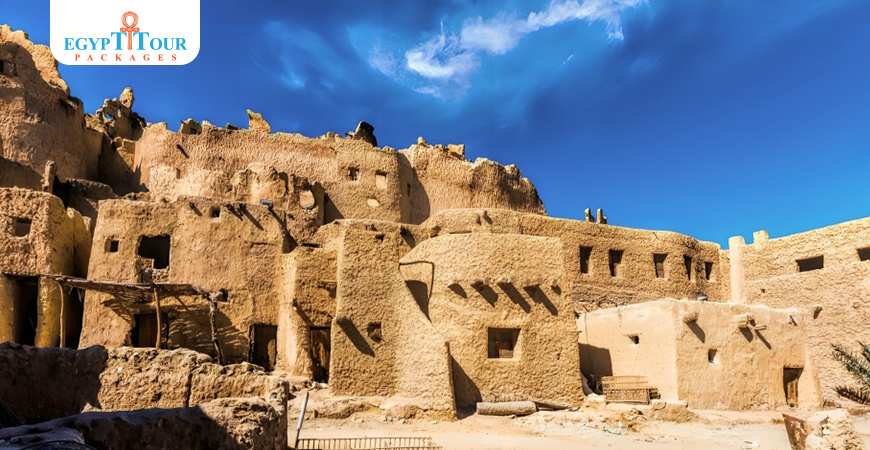
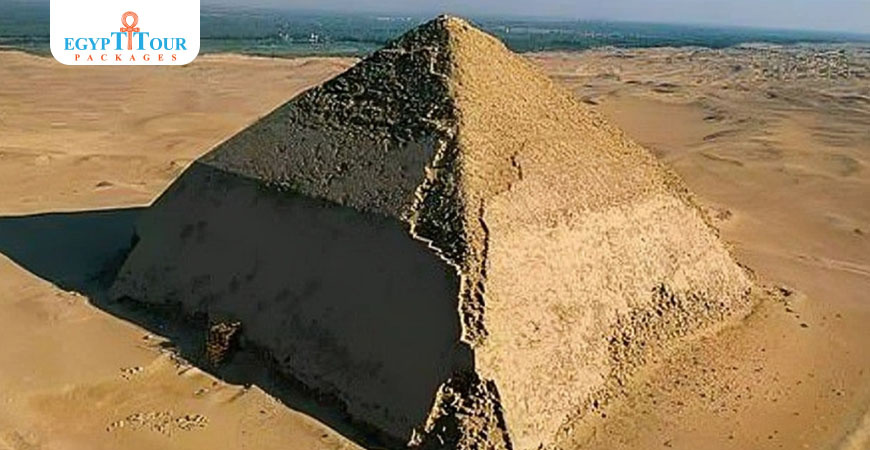
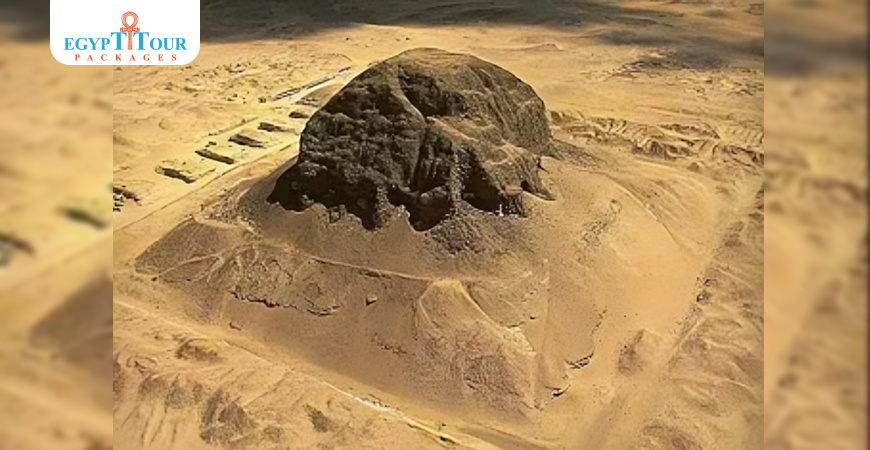
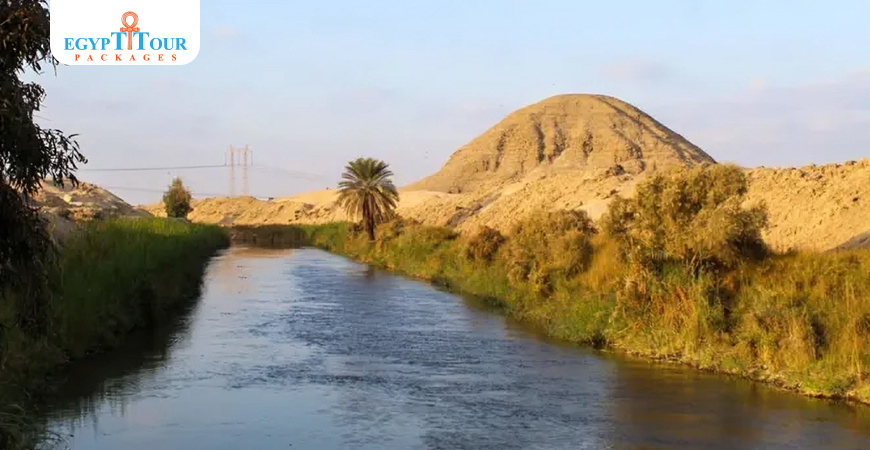


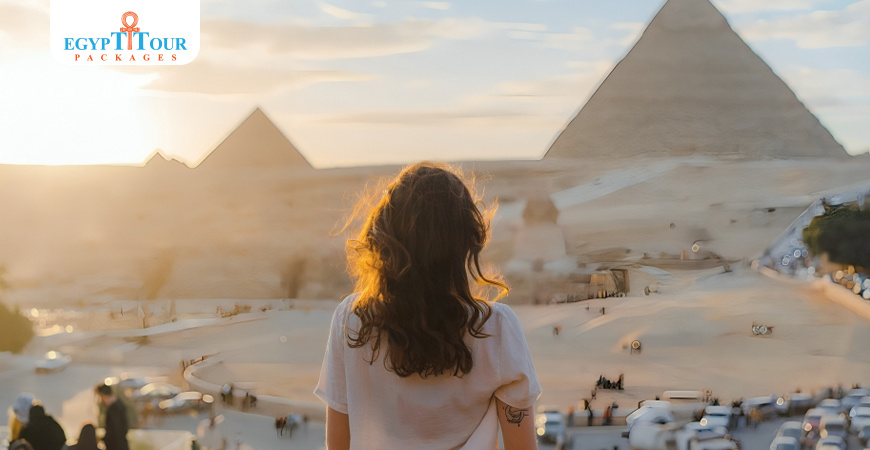
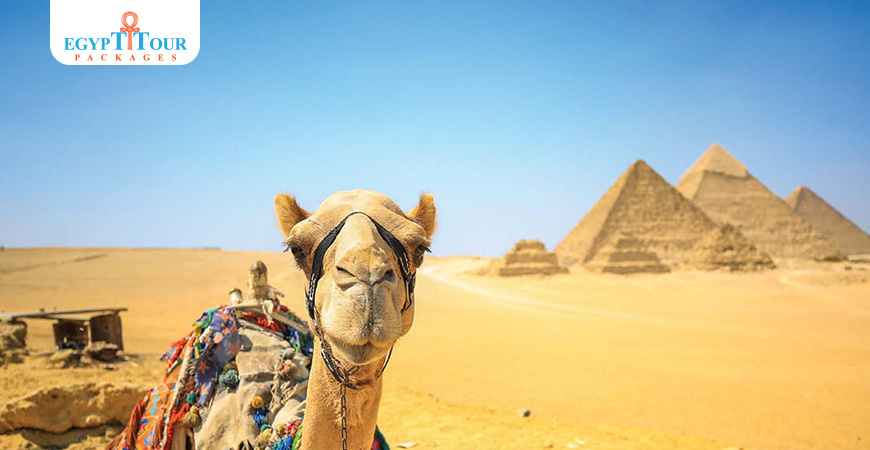











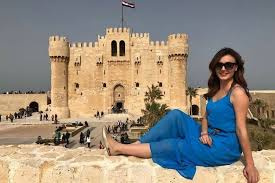

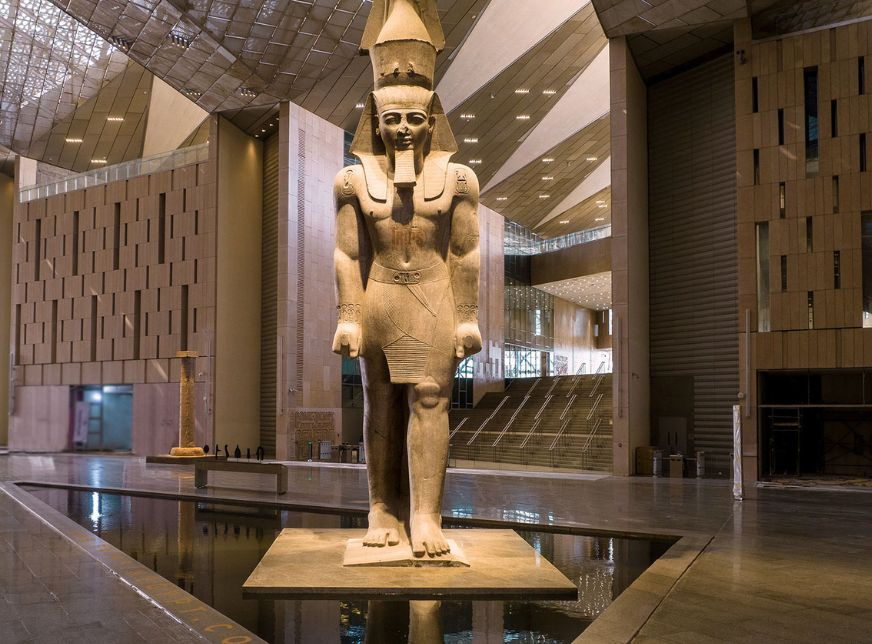



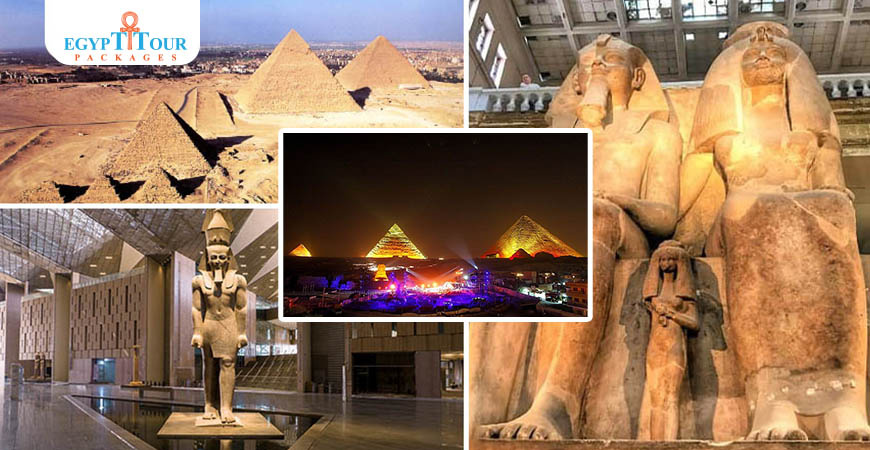







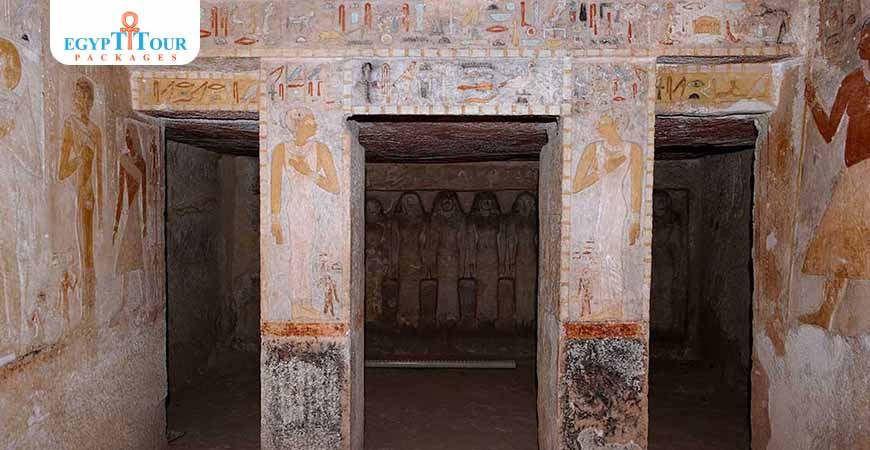
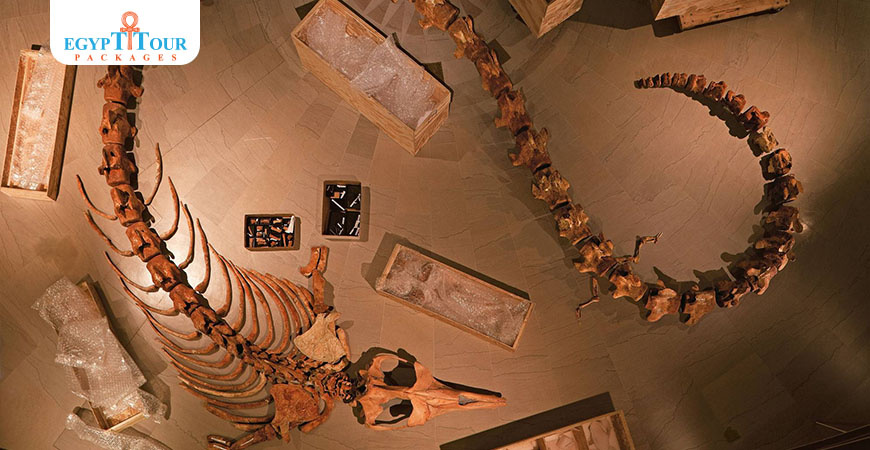
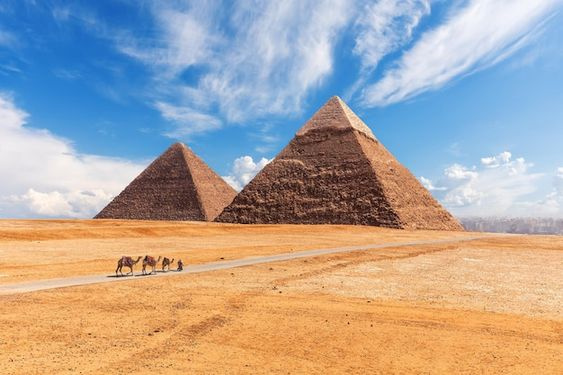
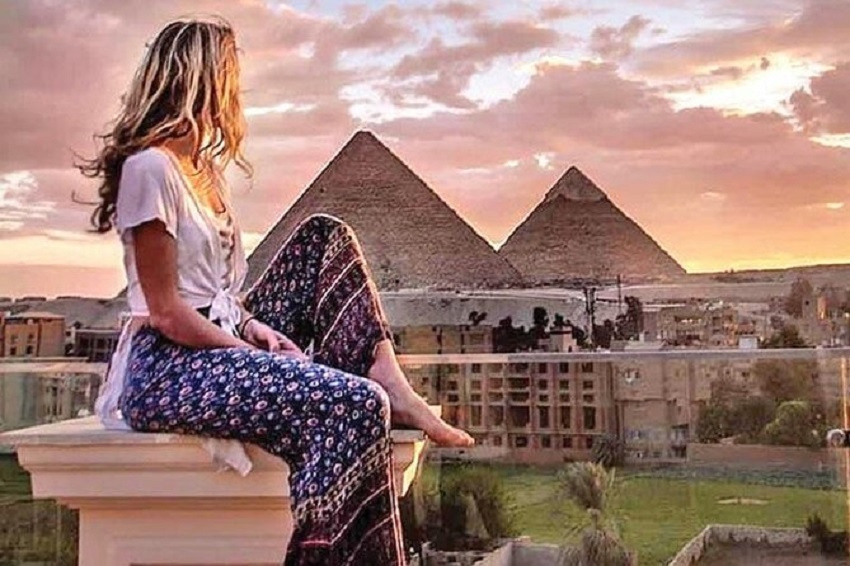
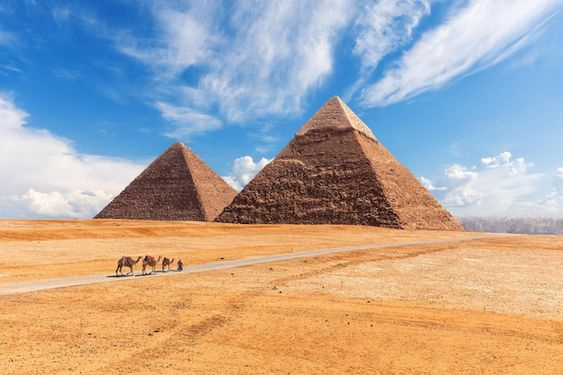
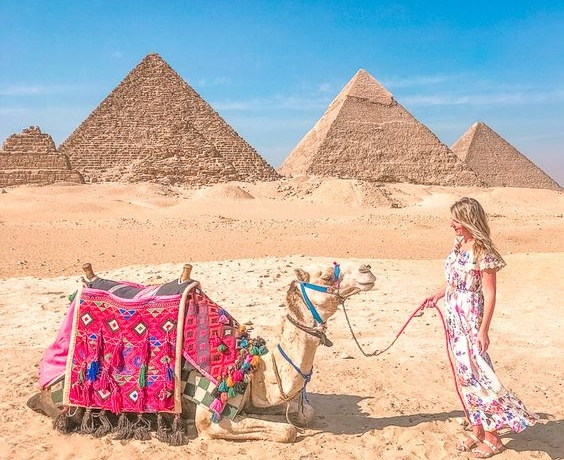
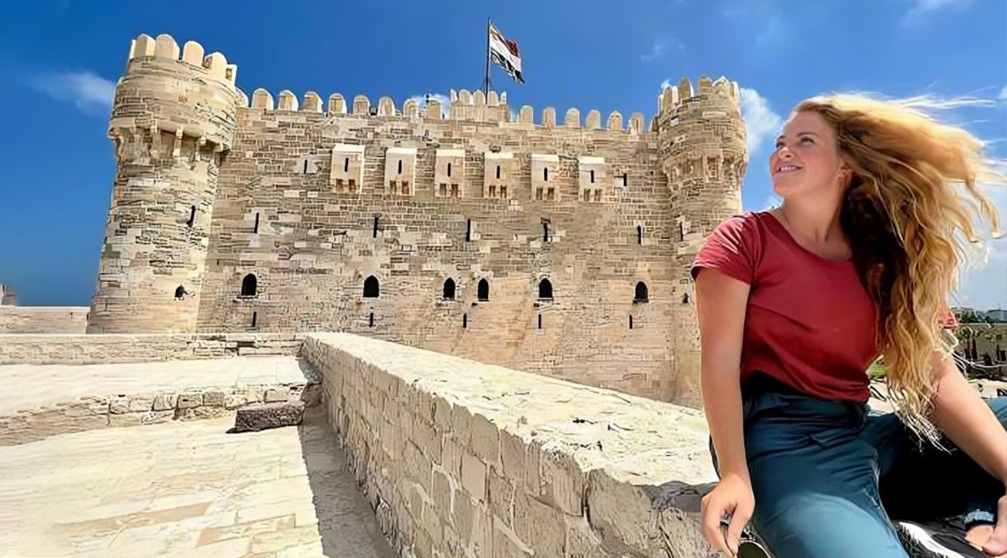
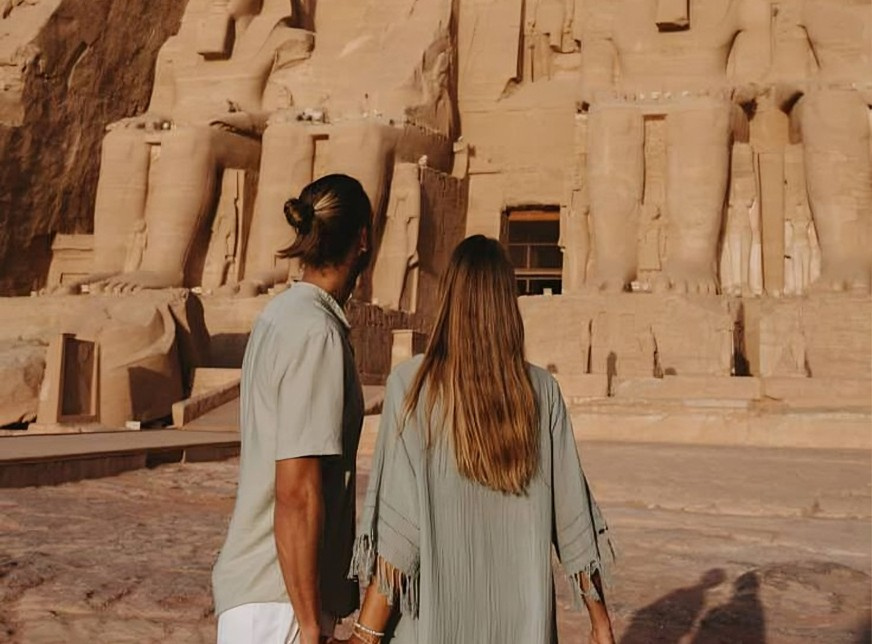
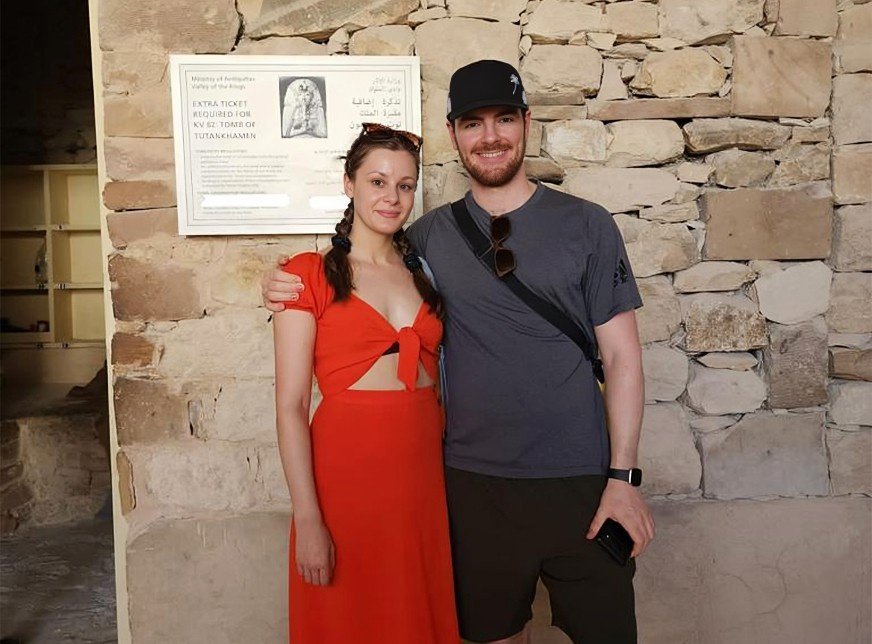

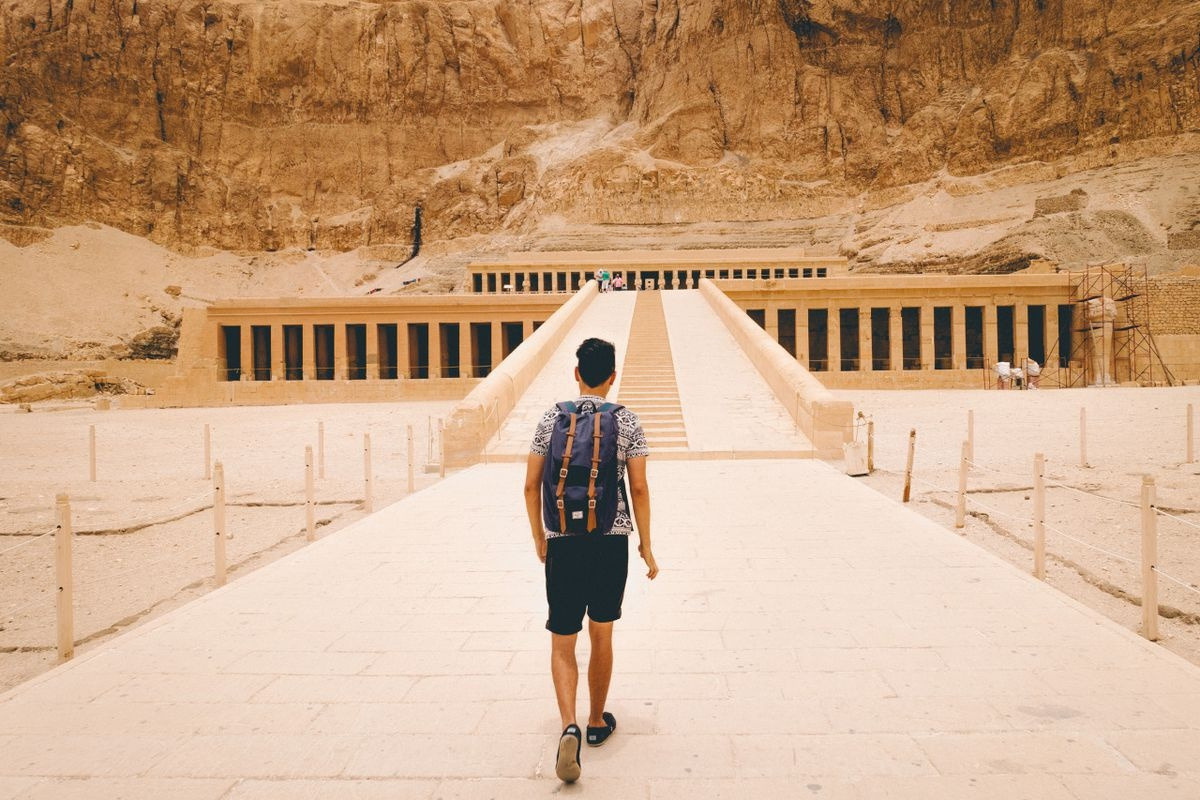


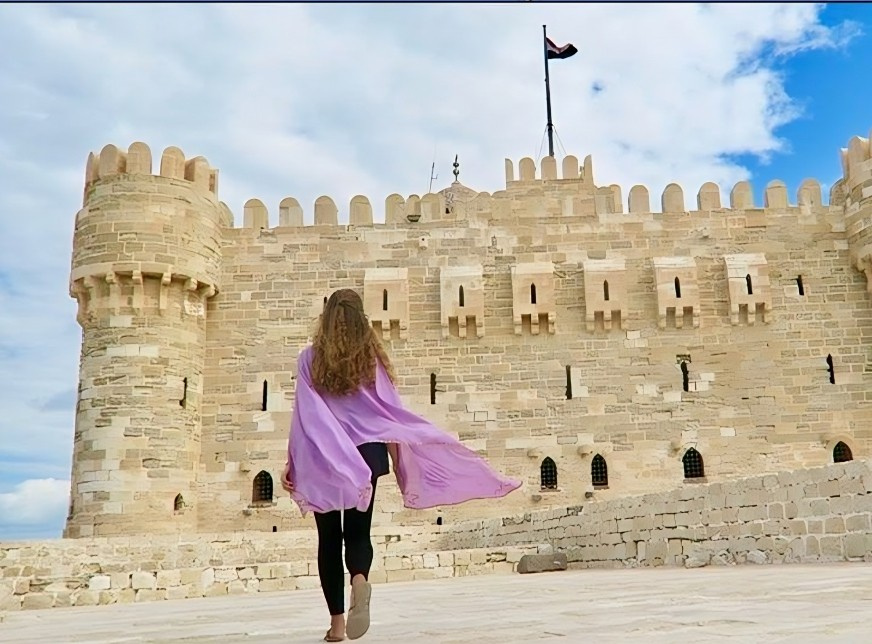
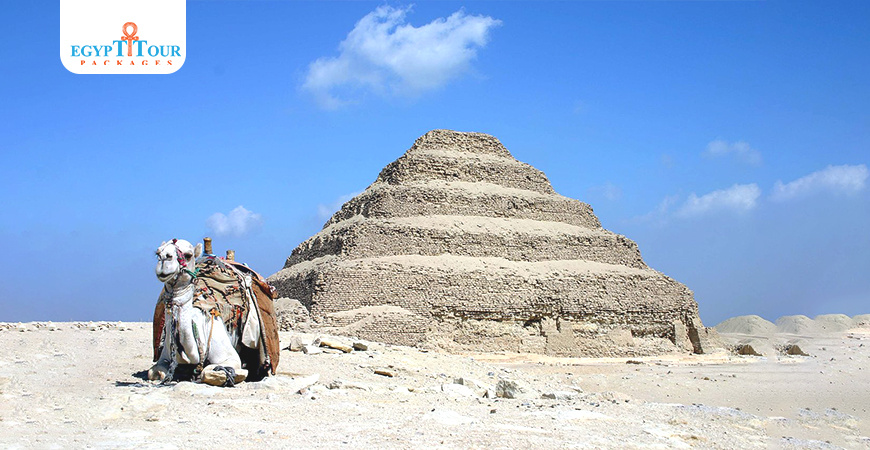

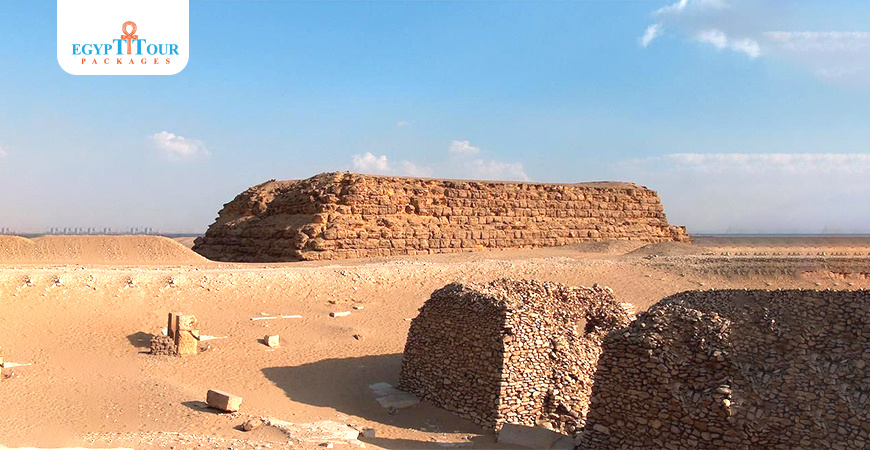
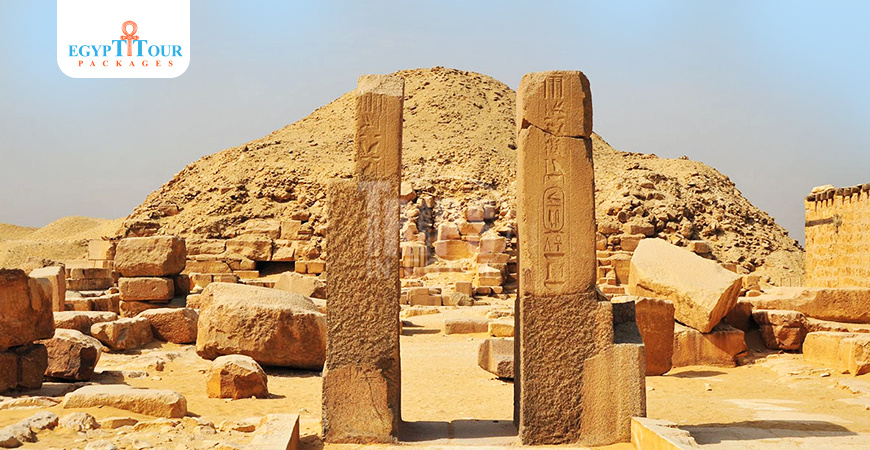

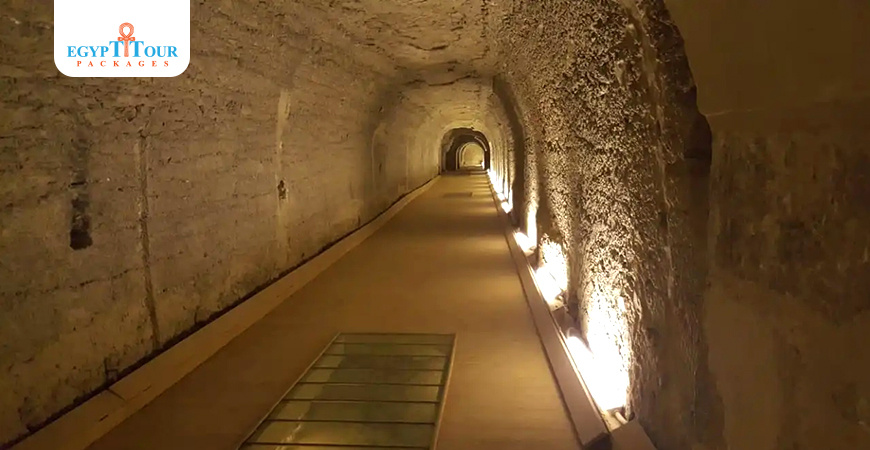

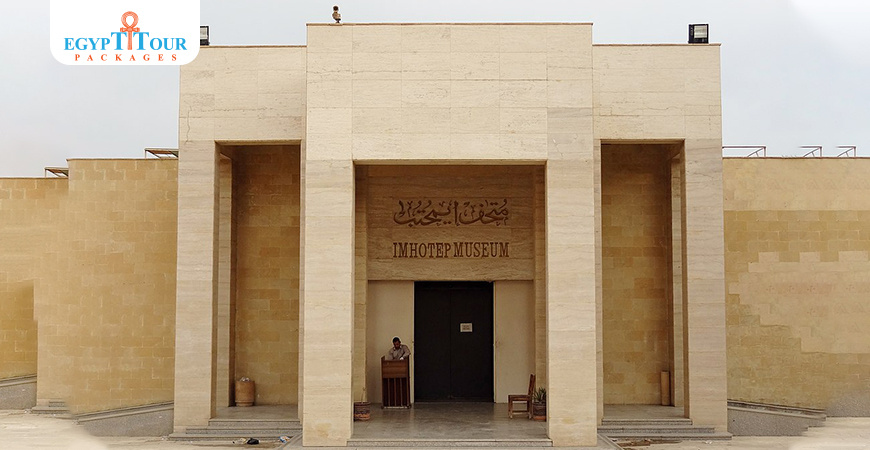

0 Comments